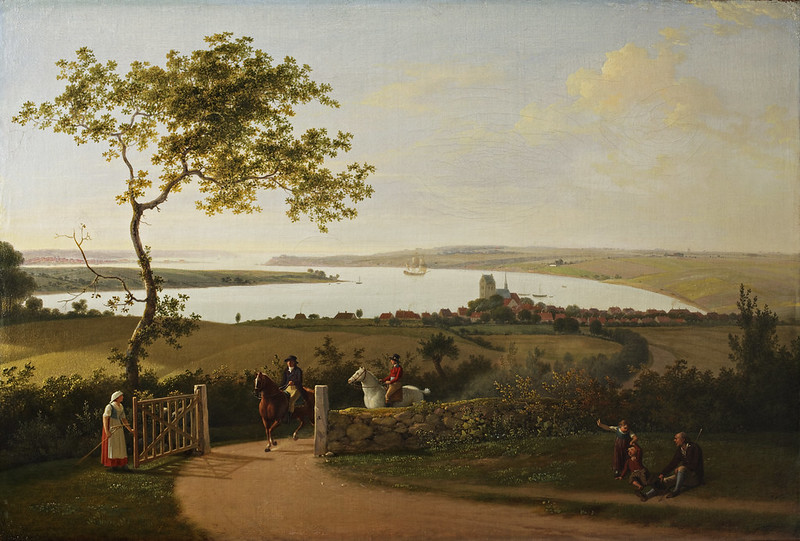Hardenack Otto Conrad Zinck (1746-1832)
- Sonate i C-dur (1783)
Performers: Thomas Trondhjem (piano)
Painting: Jens Juel (1745-1802) - View of the Little Belt from a hill near Middelfart, Funen (c.1800)
Further info: Hardenack Otto Conrad Zinck (1746-1832) - Piano works
---
German composer and instrumentalist, brother of Bendix Friedrich Zinck.
Like his brother, he was taught several musical instruments and harmony
by his father. He continued his studies in Hamburg for ten years and
performed in both amateur and public concerts there; he also had the
special esteem of his teacher, C.P.E. Bach, under whose direction he
performed as a singer in 1768. In 1777 he was recruited as first
flautist and chamber musician in the Ludwigslust Hofkapelle of the Duke
of Schwerin, where he dedicated himself increasingly to composition,
learning from imitation of Classical models and from C.P.E. Bach’s
Versuch, Kirnberger’s Kunst des reinen Satzes and Marpurg’s theoretical
writings (preface to his Sechs Clavier-Sonaten, 1783). In August 1786 he
visited Copenhagen, where he gave a highly successful concert,
appearing as a flautist, keyboard player and composer. A year later he
was offered the post of Singmeister (first accompanist) in the
Copenhagen Kongelige Kapel through the Hofkapellmeister J.A.P. Schulz.
He accepted it, and his wife, Elisabeth Pontet Zinck, an outstanding
singer at the Schwerin and Ludwigslust courts since 1779, soon took a
similar post at the Danish court in Copenhagen. Zinck was also organist
at the Vor Frelsers Kirke (1789-1801), a teacher at Blaagaards Seminary
(1791-1811) and editor of the authorized hymnbook (Choral-Melodier,
1801). Following the example of C.F.C. Fasch in Berlin, he founded a
Singakademie in 1800.
As a flute and keyboard virtuoso, and particularly as a composer, Zinck
was rightly considered one of the most gifted members of the Ludwigslust
Hofkapelle. Unlike his brother, he was less interested in symphonies
than in lieder and lyrical keyboard pieces. His six keyboard sonatas,
which C.F. Cramer praised highly, are admirably suited to the keyboard
and rich in invention, and link the keyboard sonatas of C.P.E. Bach with
those of the turn of the century. In the preface to this collection
Zinck advocated ‘characteristic instrumental pieces with new and
eloquent expression’; he also explained in detail the programmatic ideas
of the sixth sonata, whose finale leads directly to a ballad-like
choral setting of 12 verses by Count F.L. Stolberg. Following C.P.E.
Bach’s example, Zinck took part in the newly evolving relationship
between vocal and instrumental music by using instrumental sound, rather
than text, as a starting-point. The four volumes of Compositionen für
den Gesang und das Clavier (1791-93) contain lieder with German and
Danish texts, pieces from the Singspiel Selim og Mirza and sonatas and
variations for keyboard instruments. Apart from C.P.E. Bach and J.A.P.
Schulz, Zinck was also influenced by J.H. Rolle, as shown, for example,
by the folklike melodies of his oratorio Das Weltgericht. Zinck’s
cantatas, like similar compositions of his Schwerin contemporaries, were
meant for the concerts spirituels in popular character introduced there
by Duke Friedrich of Mecklenburg.

Cap comentari:
Publica un comentari a l'entrada